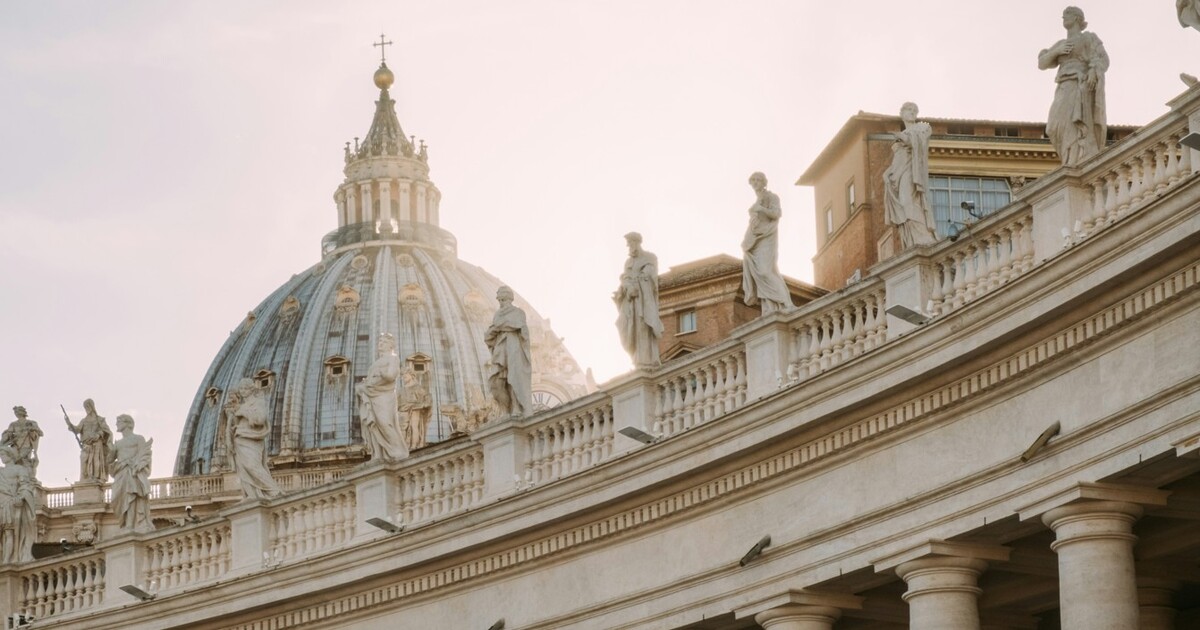In Vatican We Trust?
With an American Pope ascending to power, Italian women wait to see if reform will finally come, or if centuries of medieval dogma will continue to shape their futures.
May 30, 2025

A Strategic Assessment Memo (SAM) from the Global Ideas Center
You may quote from this text, provided you mention the name of the author and reference it as a new Strategic Assessment Memo (SAM) published by the Global Ideas Center in Berlin on The Globalist.
The same week that Robert Prevost was proclaimed the new Pope Leo XIV — spiritual shepherd to one billion Catholic souls and the first American to hold the title in history — a friend of mine had a medical check-up just a couple of miles from St. Peter’s Square.
There, she was informed that, due to the prognosis of a medical condition, she would have to pursue IVF if she ever wanted children.
The delivery of the information was not explicit. The doctor did not use the precise words in vitro fertilization. He couldn’t — or rather, he preferred skirting the issue. My friend is single and, as such, like same-sex couples, she cannot be legally recommended IVF as an option for assisted reproduction.
The Vatican’s political veto: How the Church shaped Italy’s IVF laws
Despite IVF’s reproductive revolution, the technology has been impeded in Italy. While IVF clinics initially began operations unregulated in the 1980s and 1990s, Catholic conservative hegemony, emanating from the Vatican, was soon enough to stifle the proliferation of IVF across the Italian peninsula.
In 1987, in its declaration Donum Vitae, the Vatican condemned IVF as “morally unacceptable” — a stance maintained by the late Pope Francis.
Within Italian politics, assisted reproduction — including IVF, embryo freezing, sperm and egg donation and surrogacy — was regulated in 2004 with Law 40. The legislation limited IVF to heterosexual couples and banned other forms of assisted reproduction.
It was passed by a right-wing coalition comprising the Catholic-leaning Unione dei Democratici Cristiani e di Centro (UDC), the Alleanza Nazionale (AN) and the Lega Nord — presided over by Silvio Berlusconi’s Forza Italia party.
It was a piece of legislation bearing the clear stamp of Vatican lobbying and has stood as one example among many of the Church’s role in influencing the politics that govern women’s choices over their bodies.
The hypocrite’s oath: The Church’s grip on Italian healthcare
Culturally, too, the Vatican carries enormous weight and power. The Church’s position within communities across Italy has meant that it often delivers many basic health services.
Sexual health, for instance — from HPV vaccinations to STI check-ups and prescriptions — is often handled in Catholic-affiliated medical facilities.
There is no doubt that these facilities do essential frontline work, but there are limitations to medical services delivered under the auspices of religious practices.
For all the good they do, they operate within a cultural backdrop that prioritizes religious dogma, undermining a woman’s ability to choose for herself what to do with her body.
For example, 70% of doctors profess the Catholic faith and are therefore conscientiously inclined to object to a woman requesting information about or access to abortion.
No country for old women
The consequences of the Church’s cultural and political influence are twofold for women. First, their overall biological health.
Ample studies have found material impacts on women’s health over the course of their lives. The lack of a uniform, evidence-based approach to health policy has resulted in enormous disparities and unequal access to essential healthcare services — a situation that disproportionately affects women.
The result, in short, is that women in Italy live longer than men but spend more years in poor health.
Second, there is the interrelationship between quality of life and the societal expectations placed on women.
Take parental leave: Maternity leave for women is five months, with 80% of their salary covered — the lowest in Western Europe (the exception being Spain, where parental leave is split equally at four months for both parents, with 100% salary coverage).
Italian fathers, meanwhile, get a meager ten days at full pay — the lowest in Western Europe.
Same-sex couples even worse off
For same-sex couples, the story is even grimmer. While Italy recognized civil unions in 2016, same-sex marriage is banned — as are same-sex adoption and surrogacy.
Parental leave, therefore, does not exist for them, as they are not legally recognized as parents. The nucleus of the family remains a man and woman wedlocked in heterosexual, heteronormative harmony — a dogmatic view of social values prescribed by the Vatican, whose weight continues to bear heavily on Italian life.
In his first address as Pope, Robert Prevost reiterated the sanctity of the family, whose building block is “the stable union between a man and a woman.”
The Vatican’s demographic paradox: Empty cradles and an aging nation
As with all dogmatic impositions, however, there are obvious problems. The long alliance in Italy between religious and political conservatives may have led to numerous victories protecting their vision of the family and women’s role in it, but these have not produced economic prosperity or curbed the demographic crisis facing Italy.
With half the population shackled by traditional values that prefer them to stay at home, it is unsurprising that there is a huge stigma around mothers returning to work after taking leave.
30% of women leave their jobs after having a child — compared to just 3% of men. Should they choose to re-enter the workforce, Italian mothers face a 27% lower hiring rate than women without children.
The idealization of motherhood is reflected in myriad other statistics, but the simple conclusion is that Italian women face the triple burden of unstable jobs, unpaid care work and wage discrimination.
The demographic effects
Perhaps it is unsurprising, then, that these economic hardships are doing little to produce bigger families, despite the Church’s extolling of motherhood’s virtues.
Births are at their lowest in Italian history, with projections that the population will fall by five million by 2050. This is the central piece of a demographic aging puzzle that also includes the second-highest median age in Europe and a high burden of pensioners per working person (57:100).
Demographic crises are on the rise across Europe, but in Italy, the causes are more intimately connected to the cultural attitudes fostered by the Catholic Church and conservative lobby toward the family, women and motherhood.
A new Pope, same old problems: Hollower than Hallow
It is from this vantage point that the recent developments in the Vatican and its politics ring hollow.
Millions tuned in to observe the pomp and pageantry of Pope Francis’s funeral. Attention lingered on St. Peter’s Square — with added excitement following the hype of the movie Conclave.
Finally, Robert Prevost emerged on the balcony as the new Pope Leo XIV — the first American in history. Media pundits pontificated on the meaning of this choice.
Was there a connection between his years spent in rural Peru and the favor he had garnered from his South American predecessor?
Could the speed of the two-day conclave be interpreted as a sign of unity and consensus among the Church’s 133 cardinals?
And what were the geopolitical implications of his American roots? Would they satisfy the Catholic lobby in the United States, or would his selection antagonize the religious fundamentalism of the MAGA movement?
Conclusion
Prevost now leads a community of one billion Catholics worldwide. The questions surrounding the direction of his leadership will be important. But just a couple of miles down the road, my friend will not be paying much attention.
As things stand, unable to access IVF in Italy, she must expend thought, energy and resources on circumventing cultural norms and medical practices that deny her control over her own body.
She is one of countless Italian women — perhaps facing different circumstances but united in the cultural cause of those circumstances.
She must reckon with a difficult choice that has been made for her by an Italian society scarred by the Vatican’s insidious influence — scars known by two simple and all-too-common names: Misogyny and sexism.
Takeaways
With an American Pope ascending to power, Italian women wait to see if reform will finally come, or if centuries of medieval dogma will continue to shape their futures.
While IVF clinics initially began operations unregulated in the 1980s and 1990s, Catholic conservative hegemony emanating from the Vatican was soon enough to stifle the proliferation of IVF across the Italian peninsula.
The Vatican carries enormous weight and power. The Church’s position within communities across Italy has meant that it often delivers many basic health services.
Sexual health in Italy is often handled in Catholic-affiliated medical facilities. 70% of doctors profess the Catholic faith and are therefore conscientiously inclined to object to a woman requesting information about or access to abortion.
The idealization of motherhood in Italy is reflected in myriad statistics, but the simple conclusion is that Italian women face the triple burden of unstable jobs, unpaid care work and wage discrimination.
The alliance in Italy between religious and political conservatives may have led to victories protecting their vision of the family and women’s role in it, but these have not produced economic prosperity or curbed the demographic crisis facing Italy.
Demographic crises are on the rise across Europe, but in Italy, the causes are more intimately connected to the cultural attitudes fostered by the Catholic Church and conservative lobby toward the family, women and motherhood.
A Strategic Assessment Memo (SAM) from the Global Ideas Center
You may quote from this text, provided you mention the name of the author and reference it as a new Strategic Assessment Memo (SAM) published by the Global Ideas Center in Berlin on The Globalist.


